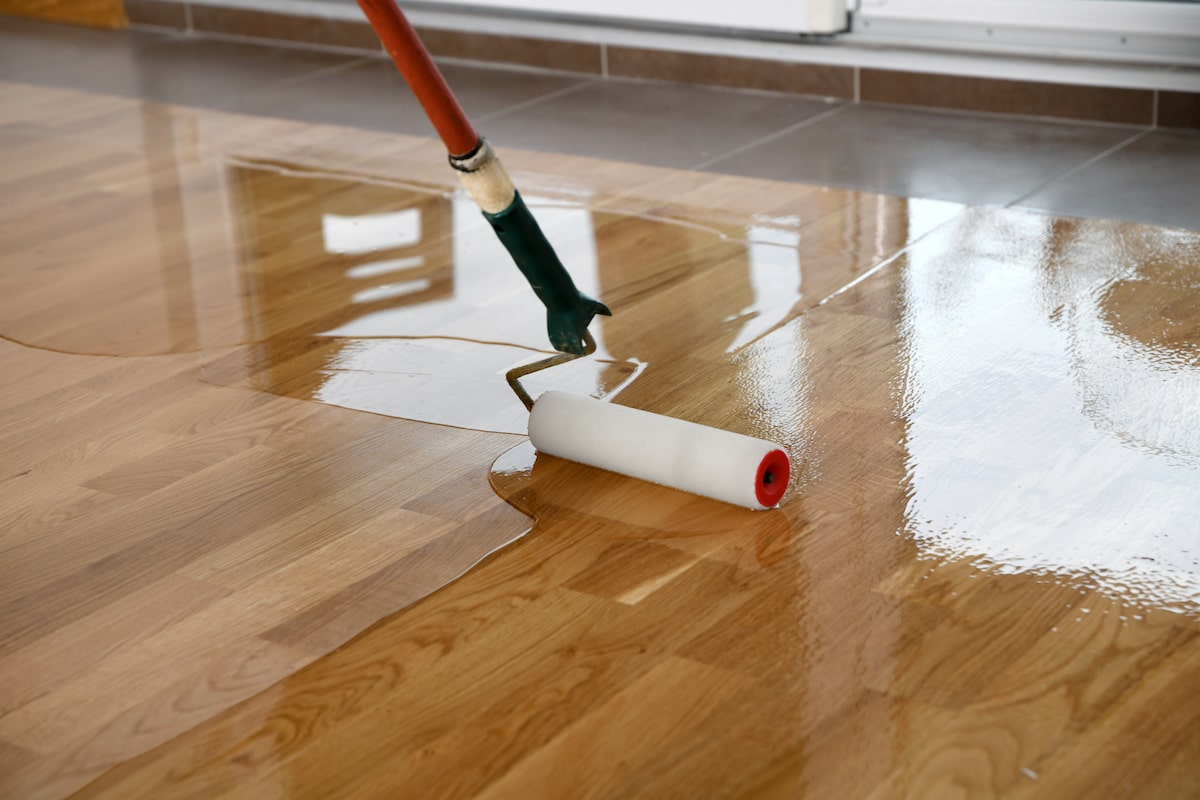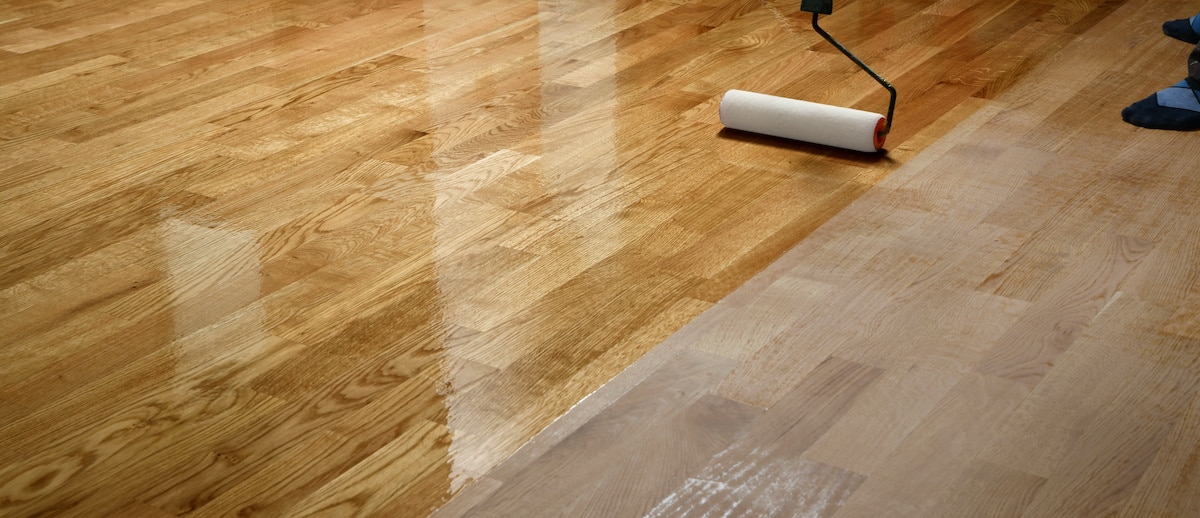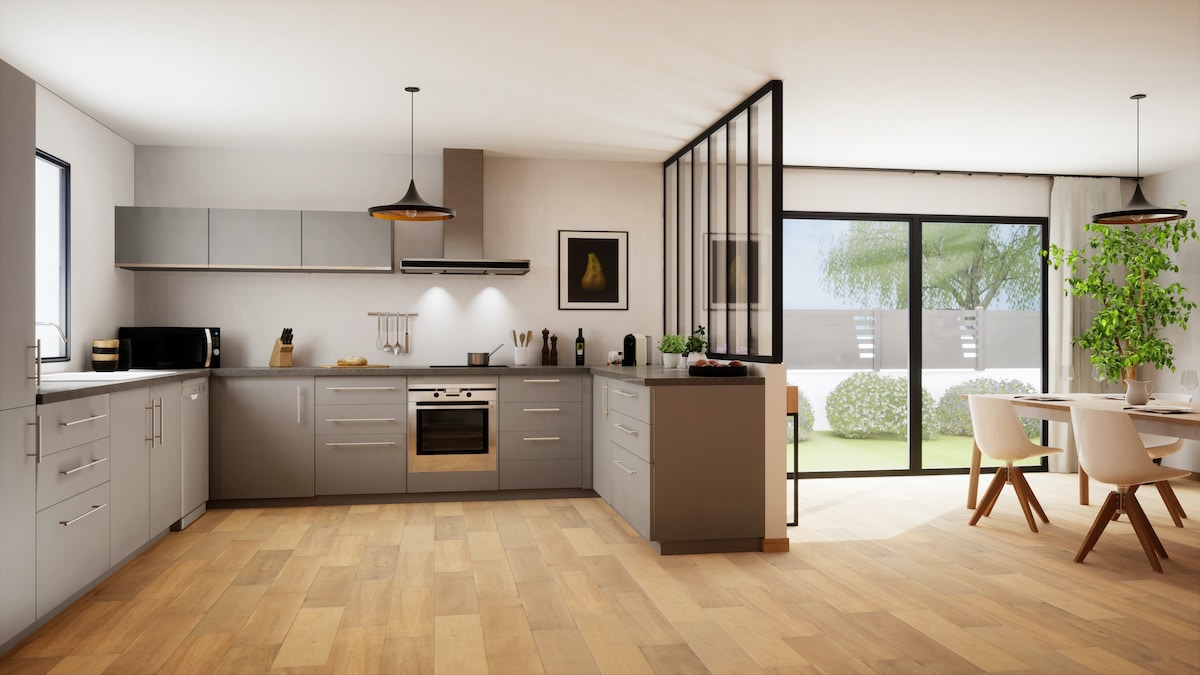Cleaning timber floors is so important! They’re beautiful when they’re first laid and they’re built to stand up to tough treatment, but to keep them looking amazing they need regular cleaning. After all, give them a healthy dose of family life, add in some contributions from pets and they’re bound to look a bit jaded.
Is there hope for your timber floors? Can you ever get it back to the showroom condition you were so proud of? Great news, the answer in most cases is yes. Cleaning timber floors is relatively straightforward – provided you take the right approach and choose your cleaning materials carefully.
And, even if your floor is damaged or badly marked, there is a solution – professionals with the right sanding and polishing equipment can work wonders. Get in touch with us if you’re considering laying timber floors or would like an instant quote for timber flooring.
Identify the problem with your timber floors
Before you start cleaning timber floors, take a look around your rooms and find out where the dirt, dust, marks and other types of damage are coming from. A little detective work can help you put together a floor protection regime.
Preventing dirt and damage can go a long way to keeping the cleaning chores to a minimum and keeping your timber floors looking their best.
Found some dents in the floor? Check the furniture in the room first. It could be the furniture legs making the wrong sort of impression, particularly if the furniture is heavy. A small investment in some furniture ‘cups’ or ‘pads’ will spread the load and prevent further damage.
Seen some unusual scratch marks on the kitchen floor? Did the delivery guys carry the new appliance or just drag it across the floor? Maybe a polite reminder next time you’ve got a heavy delivery.
Does the floor look much dirtier near the outside doors? That’s pretty easy to work out. Time for a ‘wipe your feet’ message to the family or maybe a mat to pick up the dirt from the great outdoors.
While you’re thinking outdoors, take a look at the family shoe collection. Pointy heels are a good clue to those mystery indents on the floor. And trainers? Some materials used for the outer sole can leave a mark on timber floors.
Those stains around the dining table? Wasn’t that the night you tried the red wine? Or, maybe the kids have been spilling blackcurrant juice. You can’t do much about the spills, but a quick check after meals can prevent a spill becoming a stain.
If you’ve got pets, don’t even ask. Just put the hazard warning lights on, especially if they’re not yet house-trained.
So, lots of things to look out for. But, with some careful detective work and some simple preventative measures, you should be able to limit the potential damage to your timber floors.

Lacquering wood floors. Worker uses a roller to coating floors. Varnishing lacquering parquet floor by paint roller – second layer.
Away with the dirt
Unless you’re in a hermetically sealed house, you’re not going to avoid dust, dirt and all the other hazards of everyday life. But, basic cleaning is straightforward.
First stop when cleaning timber floors is the brush to get rid of any surface dust and dirt. But, just make sure you use a brush that’s relatively soft. A hard brush like a yard broom or a brush with tough nylon bristles could scratch the surface and give you even more problems.
With surface dirt out of the way, the next stage is cleaning the marks that won’t brush off. And, here’s where you have to be careful.
Warm water and maybe a little detergent sounds like an obvious approach when cleaning timber floors, and it could be all you need. But, when we say water, we don’t mean water splashing all over the floor. Use water sparingly when cleaning timber floors because wet timber could soon pose a problem.
Using a mop is a good way to clean the surface but make sure the mop is damp, not wet. Squeeze it tight before you start cleaning and you won’t run the risk of water damage. If you use a cloth to clean small areas, the same principle applies – keep it damp.
A good material for the mop is microfibre. It won’t scratch the surface and will probably last longer than other materials.
Some timber floor manufacturers suggest mixing vinegar with water for that initial clean. Others say that a gentle household cleaner like washing up liquid will help remove dirt. It’s best to avoid household chemicals because they could react with the coating of your floor and damage the surface.
If you’re unsure, check with the company that supplied your timber floors. They can advise on basic cleaning materials as well as the materials you’ll need to treat more stubborn marks.
Regular cleaning like this is a simple, quick way to keep your floor in good condition, but if you’ve got other problems, it’s time to move to the next stage.
Deal with stubborn marks
Now, we’re getting serious and this is where it’s essential to know what type of timber floor you’ve got so you can use the right cleaning materials.
To get rid of stubborn marks when cleaning timber floors, you’ll probably need a proprietary cleaner applied with a damp mop or cloth and dried after you apply it. Even if you use a cleaning solution recommended by the manufacturer, it’s best to test it on a small area first, preferably one that’s not conspicuous.
If you’re only tackling a mark on one part of the floor, check that the area you’ve cleaned doesn’t stand out from the rest of the floor by making the surface darker or lighter. If it does, you may have to treat a larger area.
If you’re treating the complete floor to restore the finish, make sure you follow a route that won’t leave you trapped in a corner. Start by cleaning around the edges of the floor. Then, work back from the edge furthest from the door.
If your floor is made up of long strips, rather than patterns, make sure you follow the grain to maintain the best visual appearance.
Repair minor damage
If you’ve got minor damage like scratches or small dents, you may be able to repair the damage yourself. Maybe your cat thought the floor made a good scratching post or somebody accidentally dropped a knife or fork.
The type of treatment depends on the material or coating of your timber floor. If the surface is suitable, you can use fine steel wool or fine grade sandpaper to remove small scratches or dents and level the surface. A deeper indent might be repairable using a matching wood filler.
But, if the damage is too deep to repair yourself, it’s time to call in the professionals. A timber floor specialist using a sander and polisher can repair larger damaged areas or restore your floor to a showroom finish.
But, be warned, sanding is a messy process, so be prepared for a minor dust storm in the house. If you can close the room off and seal the doors you might be able to contain the dust in one room. If not, get ready for some extensive dusting.

Lacquering wood floors.
Need professional help with timber floor cleaning in Sydney or Melbourne and beyond?
If you don’t want to do the job yourself, you can ask a professional to take care of it for you. Or, perhaps you have other questions, such as how to get scratches out of hardwood floors without sanding, or how to restore hardwood floors without sanding.
We have specialists on our team who can assess your floor and recommend the most suitable approach to get the best results. We can also provide advice on the best type of finish to apply to the floor, to make sure your home looks its absolute best.
Wondering how much sanding and polishing timber floors cost? For an instant floor sanding quote, click here. If you have any questions or would like to get started, contact us on 1300304367 or hello@houseace.com.au.
with our instant quote tool
